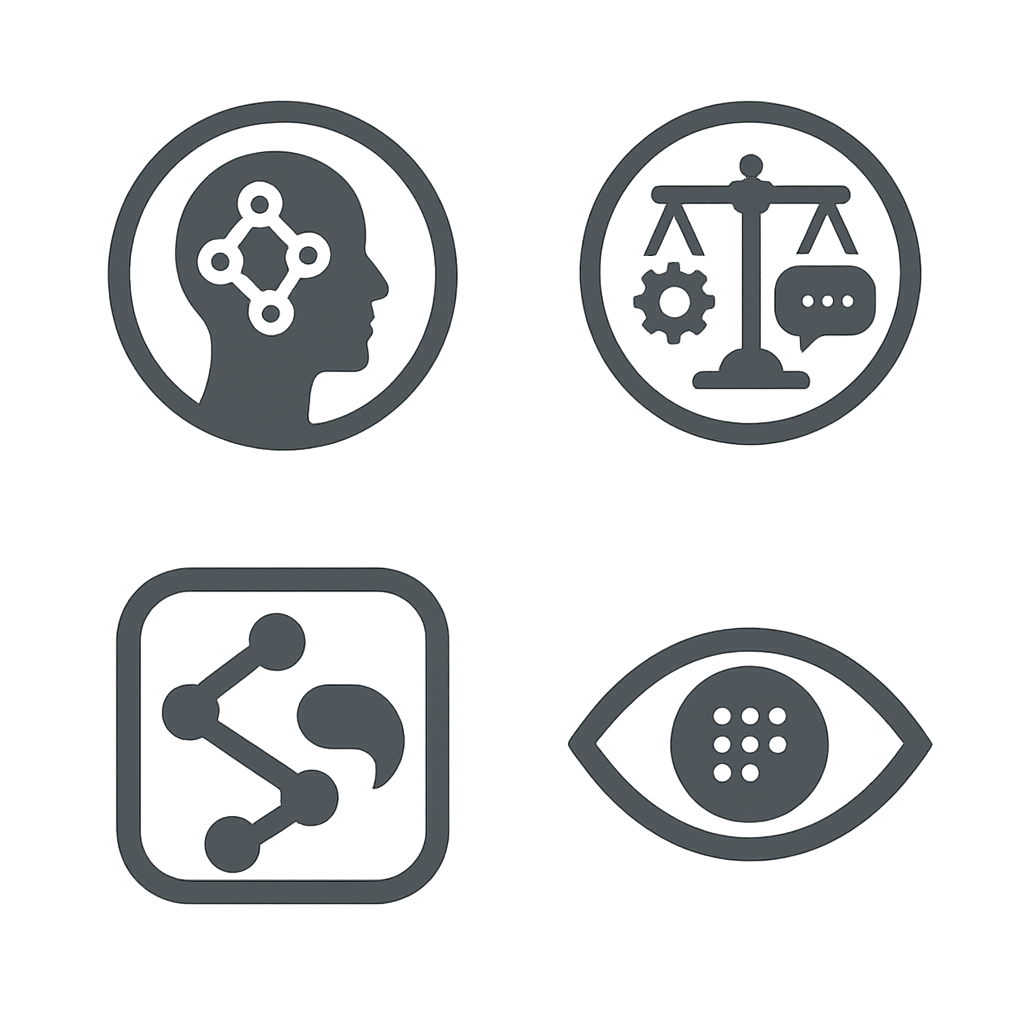Don’t ask what AI is; watch what people do to make AI outputs accountable and reasonable in situ. The action lives in the micro-work—how users format prompts, gloss odd answers, repair breakdowns, and achieve “that’ll do” as a local social fact (Garfinkel, 1967; Garfinkel, 2002).
Thesis (Garfinkel-ish)
AI is not a freestanding mind but a setting for practical reasoning. Treat every prompt→response→repair as a bit of orderly work through which members produce sense, sanction, and next steps (Garfinkel & Sacks, 1970/1972).
Core moves for an ethnomethodology of AI
- Accountability. People supply reasons for an AI’s turn (“it missed my constraint”), transforming weirdness into acceptability. Design implication: support user accounts and compact system accounts (“why this answer”) that fit actual practice (Garfinkel, 1967).
- Indexicality. Prompts and outputs depend on setting (“here,” “this style,” prior turns). Context windows are organized indexicality; study how participants point to prior turns/files as resources (Garfinkel, 1967).
- Reflexivity. Explanations both describe and shape the next action (“since it’s cautious, I’ll ask bolder”). Guardrails and disclaimers aren’t metadata; they’re part of the moral order of the exchange (Garfinkel, 1967; Garfinkel, 2002).
- Documentary method. Users read answers as evidence of a hidden “model persona” (“it knows APA but not German publishers”) and keep interpreting through that lens (Garfinkel & Sacks, 1970/1972).
- Trouble & repair. Breakdowns (hallucinations, refusals, over-compliance) are analytic gold; watch how people escalate precision, reframe tasks, or switch tools (Garfinkel, 1967).
- Membership categorization. Labels like “expert,” “assistant,” “non-compliant request,” “sensitive content” organize expectations and sanctions—who may ask what, and how (Garfinkel & Sacks, 1970/1972).
What Garfinkel would actually do (methods kit)
- Naturalistic captures. Screen/audio recordings of real tasks (coding copilots, customer support chats, student writing aids). Keep keystrokes, cursor paths, and turn-by-turn logs; pair with trace ethnography to follow tickets, commits, and dashboards (Geiger & Ribes, 2011).
- Sequential analysis. Treat prompt → response → repair as turn-taking. Code: request type, candidate understandings, accounts, repairs, acceptance/rejection (Garfinkel, 1967).
- Ethical breach probes. Introduce small, consented perturbations—underspecified prompts, conflicting constraints, role shifts—to surface tacit methods; debrief participants (Garfinkel, 1967).
- Artifact walkthroughs. Replay sessions and have users narrate “what I treated as relevant here” (Suchman, 1987/2006).
- Comparative settings. Same task across teams (legal, HR, teaching) to see how different moral orders produce different “reasonable” AIs (Lynch, 1993).
Starter study (1-week sprint)
- Sample 8–10 real tasks; capture 30–45-minute sessions.
- Build a micro-annotation scheme: T (trouble), R (repair), A (account), C (categorization), E (etcetera-clause).
- Memo recurring “work practices”: template prompts, checklists, escalation paths.
- Deliver three short “practice patterns” for product/design and one risk memo for policy.
Design takeaways
- Treat explanations as interactional—brief, referenceable, situated—rather than static model-cards alone (Suchman, 1987/2006).
- Make repair affordances first-class (“reframe,” “tighten constraints,” “cite source”), because users already do this work (Garfinkel, 1967).
- Log account chains (what counted as reasonable, by whom, when) for audit and pedagogy (Geiger & Ribes, 2011).
- Align “safety” with ordinary sanctioning practices users already deploy (soft refusals, conditional permissions, alternatives) (Garfinkel, 1967).
Field prompts you can use today
- “What work did the user do to make this answer ‘good enough’?”
- “Which parts of the prompt were treated as indexical to this setting?”
- “Where did an account (by user or system) license the next move?”
- “What exactly counted as ‘trouble,’ and who declared it?”
- “How was acceptance of the output displayed (edit, cite, ship)?”
Literature
Garfinkel, H. (1967). Studies in Ethnomethodology. Prentice-Hall/Polity. Publisher page (Wiley/Polity).
Garfinkel, H. (2002). Ethnomethodology’s Program: Working Out Durkheim’s Aphorism (A. W. Rawls, Ed.). Rowman & Littlefield/Bloomsbury. Publisher page.
Garfinkel, H., & Sacks, H. (1970/1972). On formal structures of practical actions. In D. Sudnow (Ed.), Studies in Social Interaction. Free Press. Routledge chapter record.
Suchman, L. (1987/2006). Plans and Situated Actions / Human–Machine Reconfigurations (2nd ed.). Cambridge University Press. Publisher page.
Lynch, M. (1993). Scientific Practice and Ordinary Action: Ethnomethodology and Social Studies of Science. Cambridge University Press. Publisher page.
Geiger, R. S., & Ribes, D. (2011). Trace ethnography: Following coordination through documentary practices. Proceedings of HICSS. PDF.


Leave a Reply